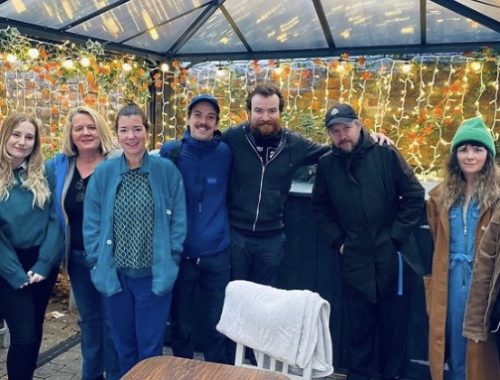Always Read the Room
Teacher Alex Parker states that ‘a lot of educators don’t receive a ton of training within teacher preparation programs on how to foster conversations’[1] about the LGBTQ community within the classroom. He states that, ‘in many cases teachers never learned about LGBTQ topics when they were students themselves.’[2] Before beginning my placement in St Dominic’s Grammar School, I guess you could say I was a little naïve to the idea that it would be a breeze. I mean what could go wrong in a drama classroom full of twenty to thirty adolescents. I can now give you an educated answer to that question…A LOT. Nevertheless, that is what placement is all about, it’s the reason we do it- to overcome challenges within our desired field of work so that we can reflect on this and learn from our mistakes for future employment. Friedrich Nietzsche once said, ‘you must be ready to burn yourself in your own flame; how could you rise anew if you have not first become ashes?’[3] The challenging experiences I faced on this placement caused me extreme embarrassment as I was confronted by my own naivety in having to deal with situations surrounding the LGBTQ community within secondary education but I know that my teaching practices would not have been improved if I hadn’t have experienced and overcame the challenges I did within this placement.
‘The only real mistake is the one from which we learn nothing’
~ Henry Ford ~

I will be using Boud’s model of reflection to evaluate my placement experience and some of the challenges I faced within the drama department of St. Dominics Grammar School. ‘Boud, Keogh, and Walker came up with the model of reflective learning in 1985[…] it looks at reflection as an activity, in which a professional can really take a step back and evaluate their own practice in a way that helps them to learn from it in the future.’[4] I will use the three components within Boud’s model of reflective practice to firstly address how I felt during the challenging experience, to secondly reflect on the situation by re-evaluating my actions and thirdly I will use the model to reflect on my new perspectives surrounding the experience and on how I will handle similar challenges when presented with them in my future teaching career.
The Experience
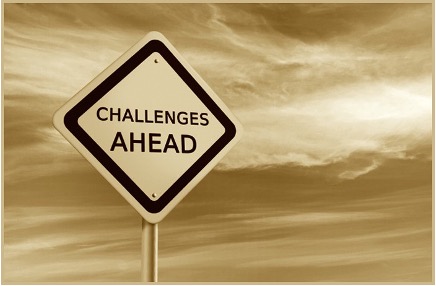
One of the biggest challenges I faced occurred on the very first day of my placement which involved an incident of gender misinterpretation. I had already developed a habit within a few hours of being in the drama department of St Dominics Grammar School for Girls, I had a habit of initially addressing each class by saying, ‘Hello, girls’, ‘Good morning girls’, before continuing to tell them a bit about myself (why I was there etc.). Senselessly, it didn’t even occur to me that perhaps some pupils were members of the LGBT community until one of the department teachers pointed out to me that a student in one of the year nine classes (that I had already addressed multiple times as ‘girls’) was transgender. She then suggested that I should try to address the class with terms that are inclusive to all genders so that I didn’t make this pupil feel isolated. Well didn’t I feel stupid…how could I have not noticed!
<https://www.canva.com/design/DAE9DrLRnXU/l5qhKSjrRcm_2MPIwY760g/watch?utm_content=DAE9DrLRnXU&utm_campaign=share_your_design&utm_medium=link&utm_source=shareyourdesignpanel>
When beginning my placement as St Dominics, it was very easy for me to very naively make the assumption that there wouldn’t be any members of the LGBTQ community within the school because of its religious background as still remaining ‘under the trusteeship of the Dominican order’[5] and because one of their main aims is to ‘bring students to a full understanding of our Catholic faith and to promote Christian values and attitudes in all members throughout the school community.’[6] It is a relatively new development especially for young adolescents of age thirteen/fourteen to be able to identify their gender in this way and I was ignorant to the fact that anyone in a year nine class would be transgender. I had to put my presumptions to one side and adapt quickly to the challenge as I knew that I did not want to make this pupil feel less valued or respected within the classroom because of how they wish to identify.
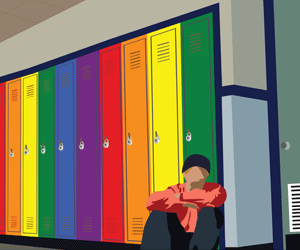
<https://www.edweek.org/leadership/opinion-for-lgbt-students-are-safe-schools-enough/2016/10>
The 2015 national school climate survey states that ‘specifically, students who identify as lesbian, gay, bisexual, or transgender report feeling less safe, less respected, and less valued in our schools than do their heterosexual and cisgender peers, leading to lower engagement and achievement’[7], it also tells us that ‘the reported grade point average for students who had higher levels of victimisation based on their sexual orientation or gender expression was significantly lower than for students who experienced less harassment and assault.’[8] I couldn’t let this pupil feel in any way less respected or valued in a classroom where I was assistant teacher. I wanted this pupil to thrive in my classroom and in all aspects of school life, feeling that their identity was just as respected and valued as any other students. I wanted this pupil to feel empowered to express their gender in how they wish and to make them aware that there is a massive space in theatre for the transgender voice. There are now ‘dozens of theatres in the UK […] promising to cast trans actors in trans roles.’[9] This comes as a result of the ‘Trans Casting Statement’ where supporters of the movement commit to ‘never cast, or endorse a production that casts, a cisgender person in a trans, non-binary or gender non-conforming role.’[10]‘Trans and non-binary visibility is now more important than ever and the more inclusive the theatre can be, the more stories we can tell the right way.’[11]
Re-evaluating the Experience

After re-evaluating the situation of which I was extremely embarrassed about, I completely changed my practice the following week when this student entered the drama classroom. In this particular week I was talking with the pupils about various plays and theatre pieces that I personally enjoy and in doing this I ensured that I mentioned pieces involving themes of transgenderism and the LGBT community. I mentioned the likes of the musical Southern Comfort which is about a transgender man who still battles with issues of womanhood. ‘Clark and Blackburn assert that ELA teachers can be powerful instruments in curbing homophobia and heterosexism in schools. They underscore the reading of LGBT-themed literature as one mechanism for accomplishing this.’[12] When undertaking warm-up exercises with the pupils I played the game ‘Good Evening your Majesty’ which is an exercise where one pupil in a group of four must be the queen with her back turned trying to guess which one of the other three group members announces ‘good evening your majesty’ in their funniest voice/accent. I tailored this exercise for this particular year nine class, after splitting the class into four groups of four I exclaimed that they must each decide which of their group members would be the queen or king having to make the decision. ‘Michael Sadowski points out that providing safety for LGBTQIA students is not enough; we must also “create schools that affirm LGBTQ students and integrate respect for LGBTQ identities through multiple aspects of school life”’[13], with Joseph Kosciw telling us that an ‘inclusive curriculum can have a large impact.

For example, in schools where students report usage of an inclusive curriculum, LGBTQ students feel more safe, are absent less frequently, and feel more connected to their schools; they also feel more accepted by their peers.’[14] I was also cautious when addressing not only this class but every class in the following weeks, assuring that I was gathering the pupil’s attention by saying ‘okay everyone’ rather than ‘okay girls’. You never know what pupils may be struggling with identity issues and so I made sure that I adhered to good practice in addressing all classes of students using terms that would be inclusive to all genders. ‘Schachter and Ventura (2008) consider that people such as teachers, parents, youth workers and mentors can be seen as identity agents, in that they are actively engaged with children in such a way as to support positive identity formation.’[15]
Shaping Future Practice
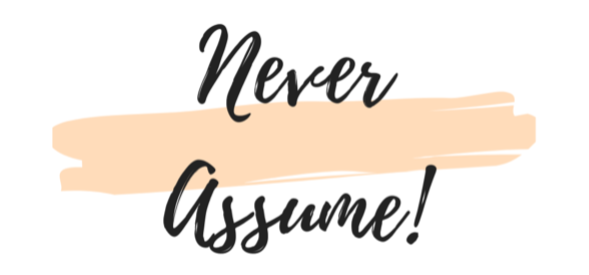
This challenge faced within the classroom has most definitely made me think of how I can shape my approach to teaching to insure good practice in the future. I want to be the type of teacher who can use my classroom as a safe place for all students, I want to create a supportive and inclusive learning environment where all pupils can feel valued and respected as they begin to develop their personal identities at this confusing age of adolescence. I want to use the medium of drama as a way to free students from judgement and subjection and want the pupils in my classroom to feel confident in using this art form to express their true identity and to develop confidence in who they are, not just within the school community but with their peers and in the outside world also. Michelle Page tells us that ‘English, language and arts teachers have the opportunity to make a difference in the lives of LGBTQIA students and to help stem the tide of harassment, violence, depression, and other issues often experienced by LGBTQIA learners.’[16] Since overcoming this challenge I have learned that it is so important to always read the room at the start of every lesson, to always be adaptable to any situation within the classroom and to try to avoid creating habits when addressing and teaching classes as you must always remember that no two classes are the same and that it is very wrong to assume so.
References
[1] Ileana Najarro, ‘Teachers Are Divided on Teaching LGBTQ Topics’, Education Week (2021) in <https://www.edweek.org/leadership/educators-divided-on-whether-schools-should-teach-about-lgbtq-topics-survey-finds/2021/12> [accessed 24 March 2022].
[2] Ibid.
[3] Good Reads, Friedrich Nietzsche (2022) <https://www.goodreads.com/quotes/278067-you-must-be-ready-to-burn-yourself-in-your-own> [accessed 22 March 2022].
[4] The CV Method, Reflective Learning – Boud, Keogh & Walker (2022) <https://thecvmethod.wordpress.com/2016/09/29/reflective-learning-boud-keogh-walker/> [accessed 23 March 2022].
[5] SF Digital Belfast, St Dominics Grammar School (2022) <https://www.stdominics.org.uk/vision-and-values> [accessed 24 March 2022].
[6] Ibid.
[7] Joseph G. Kosciw, Emily A. Gretak, Noreen M. Giga, Christian Villenas and David J. Danischewski, The 2015 national school climate survey: The experiences of lesbian, gay, bisexual and trans- gender youth in our nation’s schools, (New York: Gay, Lesbian, and Straight Education Network, 2016), in <https://files.eric.ed.gov/fulltext/ED574780.pdf > [accessed 22 March 2022].
[8] Ibid.
[9] OnStageBlog, UK Theatres commit to only cast trans actors in trans roles (2022) <https://www.onstageblog.com/editorials/2021/5/27/uk-theatres-commit-to-only-cast-trans-actors-in-trans-roles> [accessed 24 March 2022].
[10] Ibid.
[11] Ibid.
[12] Caroline Clark & Mollie Blackburn, ‘Reading LGBT-Themed Literature with Young People: What’s Possible?’, English Journal, 98.4, (2009), 25-32, in <https://www.proquest.com/docview/237298054> [accessed 22 March 2022].
[13] Michael Sadowski, ‘More than a Safe Space: How Schools Can Enable LGBTQ Students to Thrive’, American Educator, 40.4, (2017), 4-9 (p. 9), in <https://files.eric.ed.gov/fulltext/EJ1123878.pdf> [accessed 22 March 2022].
[14] GLSEN, ‘Teaching Respect: LGBT-Inclusive Curriculum and School Climate (Research Brief)’, Gay, Lesbian & Straight Education Network (2011) in <https://www.glsen.org/sites/default/files/2020-06/Teaching%20Respect.pdf> [accessed 22 March 2022].
[15] Janet Goepel, Helen Childerhouse & Sheila Sharpe, Inclusive Primary Teaching: a critical approach to equality and special educational needs and disability, 2nd edn. (Northwich [England]: Critical Publishing Ltd., 2015), p. 133, in Queen’s University Library Catalogue, <https://ebookcentral.proquest.com/lib/qub/reader.action?docID=4013675> [accessed 22 March 2022].
[16] Michelle L. Page, ‘From Awareness to Action: Teacher Attitude and Implementation of LGBT-Inclusive Curriculum in the English Language Arts Classroom’, SAGE Open (2017), p. 2, in <https://doi.org/10.1177%2F2158244017739949> [accessed 22 March 2022].
Bibliography
Clark, Caroline & Blackburn, Mollie, ‘Reading LGBT-Themed Literature with Young People: What’s Possible?’, English Journal, 98.4, (2009), 25-32, in <https://www.proquest.com/docview/237298054> [accessed 22 March 2022]
GLSEN, ‘Teaching Respect: LGBT-Inclusive Curriculum and School Climate (Research Brief)’, Gay, Lesbian & Straight Education Network (2011) in <https://www.glsen.org/sites/default/files/2020-06/Teaching%20Respect.pdf> [accessed 22 March 2022]
Goepel, Janet, Childerhouse, Helen & Sharpe, Sheila, Inclusive Primary Teaching: a critical approach to equality and special educational needs and disability, 2nd edn. (Northwich [England]: Critical Publishing Ltd., 2015), p. 133, in Queen’s University Library Catalogue, <https://ebookcentral.proquest.com/lib/qub/reader.action?docID=4013675> [accessed 22 March 2022]
Good Reads, Friedrich Nietzsche (2022) <https://www.goodreads.com/quotes/278067-you-must-be-ready-to-burn-yourself-in-your-own> [accessed 22 March 2022]
Kosciw, Joseph G., Gretak, Emily A., Giga, Noreen M., Villenas, Christian and Danischewski,David J., The 2015 national school climate survey: The experiences of lesbian, gay, bisexual and trans- gender youth in our nation’s schools, (New York: Gay, Lesbian, and Straight Education Network, 2016), in <https://files.eric.ed.gov/fulltext/ED574780.pdf > [accessed 22 March 2022]
Najarro, Ileana, ‘Teachers Are Divided on Teaching LGBTQ Topics’, Education Week (2021) in <https://www.edweek.org/leadership/educators-divided-on-whether-schools-should-teach-about-lgbtq-topics-survey-finds/2021/12> [accessed 24 March 2022]
OnStageBlog, UK Theatres commit to only cast trans actors in trans roles (2022) <https://www.onstageblog.com/editorials/2021/5/27/uk-theatres-commit-to-only-cast-trans-actors-in-trans-roles> [accessed 24 March 2022]
Page, Michelle, L., ‘From Awareness to Action: Teacher Attitude and Implementation of LGBT-Inclusive Curriculum in the English Language Arts Classroom’, SAGE Open (2017), p. 2, in <https://doi.org/10.1177%2F2158244017739949> [accessed 22 March 2022]
Sadowski, Michael, ‘More than a Safe Space: How Schools Can Enable LGBTQ Students to Thrive’, American Educator, 40.4, (2017), 4-9 (p. 9), in <https://files.eric.ed.gov/fulltext/EJ1123878.pdf> [accessed 22 March 2022]
SF Digital Belfast, St Dominics Grammar School (2022) <https://www.stdominics.org.uk/vision-and-values> [accessed 24 March 2022]
The CV Method, Reflective Learning – Boud, Keogh & Walker (2022) <https://thecvmethod.wordpress.com/2016/09/29/reflective-learning-boud-keogh-walker/> [accessed 23 March 2022]
Links
- Ileana Najarro, ‘Teachers Are Divided on Teaching LGBTQ Topics’, Education Week (2021) in <https://www.edweek.org/leadership/educators-divided-on-whether-schools-should-teach-about-lgbtq-topics-survey-finds/2021/12> [accessed 24 March 2022]
- SF Digital Belfast, St Dominics Grammar School (2022) <https://www.stdominics.org.uk/vision-and-values> [accessed 24 March 2022]
- Joseph G. Kosciw, Emily A. Gretak, Noreen M. Giga, Christian Villenas and David J. Danischewski, The 2015 national school climate survey: The experiences of lesbian, gay, bisexual and trans- gender youth in our nation’s schools, (New York: Gay, Lesbian, and Straight Education Network, 2016), in <https://files.eric.ed.gov/fulltext/ED574780.pdf > [accessed 22 March 2022]
- Michael Sadowski, ‘More than a Safe Space: How Schools Can Enable LGBTQ Students to Thrive’, American Educator, 40.4, (2017), 4-9 (p. 9), in <https://files.eric.ed.gov/fulltext/EJ1123878.pdf> [accessed 22 March 2022]
- Blake Ross, ‘What It Means to Be Trans in the Theatre’, PlayBill (2016) in <https://www.playbill.com/article/what-it-means-to-be-trans-in-the-theatre> [accessed 24 March 2022]
- Royal Central School of Speech and Drama, Trans Casting Statement (2022) <http://www.transcastingstatement.com/about> [accessed 24 March 2022]
- Mollie Blackburn & Mary Catherine Miller, ‘Equity by Design: Teaching LGBTQ-Themed Literature in English Language Arts Classrooms’, Midwest & Plains Equity Assistance Center (2017), 1-10, in <https://files.eric.ed.gov/fulltext/ED580428.pdf> [accessed 22 March 2022]
- Hey Teach, 5 Things You Can Do to Support Your LGBTQ Students (2022) <https://www.wgu.edu/heyteach/article/5-things-you-can-do-support-your-lgbtq-students1809.html> [accessed 24 March 2022]
- Cory Collins and Jey Ehrenhalt, ‘BEST PRACTICES FOR SERVING LGBTQ STUDENTS: A Teaching Tolerance Guide’, Teaching Tolerance (2018), in <https://www.learningforjustice.org/sites/default/files/2018-09/TT-LGBTQ-Best-Practices-Guide.pdf> [accessed 22 March 2022]
- George Coles, ‘Using Drama to celebrate LGBT equality in schools’, Medium (2019) in <https://georgerobertcoles.medium.com/using-drama-to-celebrate-lgbt-equality-in-schools-3abe1d0652dd> [accessed 24 March 2022]
Images
- Wilfrid Laurier University, Reflective Writing (2022) <https://writeonline.ca/reflective-essay.php?content=section2> [accessed 23 March 2022]
- Litrejections, Challenges Ahead (2022) <http://www.litrejections.com/challenges-ahead/> [accessed 22 March 2022]
- Canva: My own design- ‘Subscribe for even more Stupidity!’ <https://www.canva.com/design/DAE9DrLRnXU/l5qhKSjrRcm_2MPIwY760g/watch?utm_content=DAE9DrLRnXU&utm_campaign=share_your_design&utm_medium=link&utm_source=shareyourdesignpanel>[accessed 24 March 2022]
- Education Week, For LGBT Students, Are ‘Safe Schools’ Enough? (2022) <https://www.edweek.org/leadership/opinion-for-lgbt-students-are-safe-schools-enough/2016/10> [accessed 24 March 2022]
- Karen McCullough, Why Change in the Workplace is Good! A Guide for Companies (2022) <https://www.karenmccullough.com/change-in-the-workplace-a-guide-for-companies/> [accessed 22 March 2022]
- GLSEN, ‘Teaching Respect: LGBT-Inclusive Curriculum and School Climate (Research Brief)’ <https://www.glsen.org/sites/default/files/2020-06/Teaching%20Respect.pdf> [accessed 22 March 2022]
- Virginie Lemay-Vriesde: Leadership Development Coach, Never Assume (2022) <https://vlv.coach/be-careful-of-assumptions/never-assume/> [accessed 22 March 2022]
How did I end up here?
A Turn of Events
You May Also Like
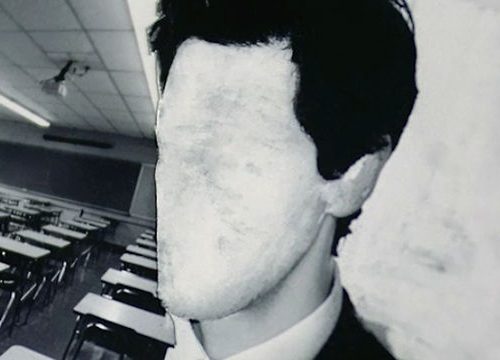
The Equity Of Detachment
25 March 2022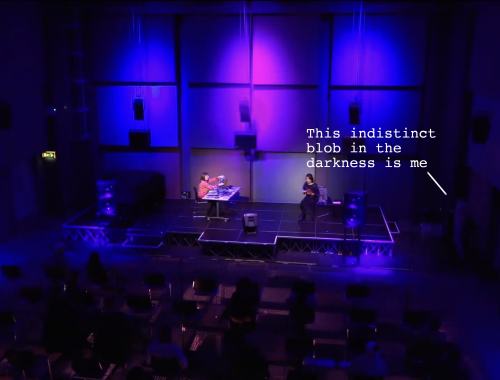
Teamwork Makes the Stream Work
27 March 2022